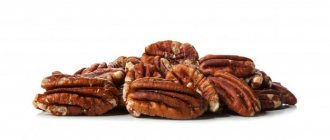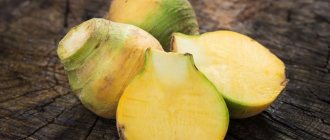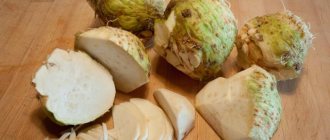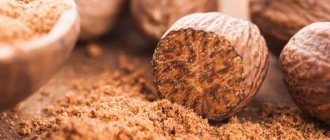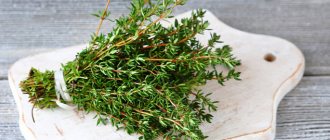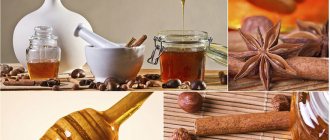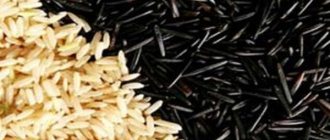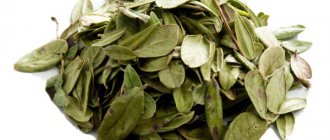Compound
| Compound | Unit change | per 100 g | % of daily value |
| BJU, calorie content | |||
| Squirrels | G | 14,3 | 16% |
| Fats | G | 67,1 | 67% |
| Carbohydrates | G | 11,74 | 3% |
| Cellulose | G | 7,5 | — |
| Sugar | G | 2,33 | — |
| Calorie content | kcal | 659 | — |
| Minerals | |||
| Calcium, Ca | mg | 160 | 16% |
| Iron, Fe | mg | 2,43 | 17% |
| Magnesium, Mg | mg | 376 | 93% |
| Phosphorus, P | mg | 725 | 90% |
| Potassium, K | mg | 659 | 26% |
| Sodium, Na | mg | 3 | 0,2% |
| Zinc, Zn | mg | 4,06 | 33% |
| Copper, Cu | mg | 1,74 | 174% |
| Selenium, Se | mcg | 1917 | 3500% |
| Vitamins | |||
| Vitamin C | mg | 0,7 | 0,7% |
| Thiamine, B1 | mg | 0,62 | 41% |
| Riboflavin, B2 | mg | 0,35 | 20% |
| Niacin, B3 | mg | 0,3 | 1% |
| Vitamin B6 | mg | 0,1 | 5% |
| Folic acid | mcg | 22 | 11% |
| Fats | |||
| Saturated fatty acids | G | 16,1 | — |
| Monounsaturated fatty acids | G | 23,8 | — |
| Polyunsaturated fatty acids | G | 24,4 | — |
The ratio of elements in Brazil nuts.
The calorie content of Brazil nuts is 660 kcal per 100 g of weight. It is rich in fats, which consist of monounsaturated and polyunsaturated fatty acids - mainly linoleic acid. The chemical composition also contains 14 g of protein per 100 g.
The weight of one Brazil nut is approximately 5 g, calorie content 33 kcal, and contains 95 mcg of selenium (daily value 55 mcg).
Brazil nuts are sources of minerals: calcium, magnesium, potassium and iron. Calcium is used in the body for the mineralization of bones and teeth, and is also involved in enzymatic reactions and blood clotting
Magnesium is used to activate numerous enzymes and is essential for muscle contraction. Deficiency can lead to cramps, so care should be taken to ensure adequate magnesium intake during exercise.
Potassium regulates the conductivity of nerve and muscle cells in the body and affects the activity of the heart. Iron, which is present at 2.43 mg per 100 g, is a component of red blood pigment (hemoglobin) and is used to transport oxygen in the blood.
Brazil nuts are the richest source of selenium , which has an antioxidant effect and protects red blood cells and cell membranes. Zinc and copper are also present in noticeable quantities.
As a cofactor for many enzymes, zinc intervenes in many metabolic processes and is involved in stimulating the immune system. The copper content promotes blood formation and is effective as an antioxidant.
Brazil nuts also contain a fairly large amount of the radioactive isotope radium. High doses of this chemical element cause radiation damage to cells. But to get any harm from the radium of Brazil nuts, you need to eat 1 kg every day for a long time. In normal human dosages it will only bring benefits.
Can pregnant women eat Brazil nuts?
1. Selenium has a beneficial effect on the functioning of the reproductive system, and during pregnancy it promotes a smooth process and prevents the development of pathologies in the fetus.
2. Omega-6 and Omega-3 fatty acids help reduce the risk of premature birth and late toxicosis, as well as postpartum depression.
On a note! After the birth of the baby, it is better to avoid eating nuts while breastfeeding so as not to harm the baby’s health.
Consumption standards
Brazil nuts contain a lot of selenium - 1917 mcg per 100 g , which corresponds to 3500% of the daily requirement . The recommended daily intake is 1-2 pieces . In case of selenium deficiency, it is recommended to consume 2-3 nuts in the morning and evening. However, it is important not to overdo it because they are very high in calories and fat.
Overdose can cause selenium poisoning, which is characterized by liver damage and gastrointestinal problems such as diarrhea, nausea and vomiting. In the longer term, serious nail changes (deformation, brittleness), hair loss, skin damage and neurological disorders occur.
Brazil nuts: how to select and store
1. When buying nuts in shell, pay attention to the integrity of the shell, without dents or cracks, and the weight of the fruit, so as not to buy empty nuts. Nuts can be stored in shells for up to two years.
2. When purchasing peeled fruits, choose smooth and hard nuts and avoid wrinkled or damaged fruits.
It is better to buy by weight or in transparent packaging, where you can clearly see the contents. It is better to store peeled fruits in the refrigerator, in a closed container, so that the nuts do not absorb foreign odors.
Cosmetic oil
Beneficial features
Selenium is a trace element and antioxidant that protects cells from oxidative stress. It binds heavy metals and helps in their removal. Another important effect of Brazil nuts is to increase testosterone synthesis. Selenium increases libido, which is necessary for both men and women.
The nut contains a high concentration of linoleic acid, which has a positive effect on the immune system and prevents infectious diseases - including influenza infections.
What it looks like and where it grows
Let's first talk about how Brazil nuts grow! The Bertholetia tree (in honor of the chemist Berthollet) grows not only in Brazil, but also in other countries:
- Guiana;
- Venezuela;
- Bolivia;
- Peru.
The properties of Brazil nuts have been known since the times of the Aztecs - the fruits are valued for their taste and nutritional value, and their beneficial effect on the human body.
You already understand where the Brazil nut grows - and what does it look like? You will be surprised, this is not an ordinary shrub!
- The tree reaches 50-60 meters in height and three meters in width;
- Features a smooth straight trunk;
- The leaves are located at the very top;
- Grows up to five hundred years;
- It begins to bear fruit only in the twelfth year of life.
A Brazil nut in a shell is somewhat reminiscent of a coconut - it weighs about two kilograms, and from eight to twenty-four oily fruits are hidden inside.
- The shell is thin, but very durable - it usually breaks when dropped;
- The fruits reach 5-6 centimeters in length.
Now let's talk about what a Brazil nut looks like and what it tastes like - quite interesting characteristics:
- The taste is reminiscent of pine nuts, earthy and quite bland;
- In appearance - elongated yellow nucleoli with brown inclusions.
Look at the photo of a Brazil nut fruit to learn how to easily distinguish it from other fruits - but you won’t be confused!
Now we can talk about the composition of this interesting nut.
Contraindications
It is strictly forbidden to consume Brazil nuts in large quantities due to the risk of a fatal overdose of selenium. Patients with allergies or pancreatitis should avoid consuming this food product.
Attention! Allergic reactions are relatively rare but are often very severe. Less commonly, very strong oral reactions occur—the mouth, lips, and throat may become swollen. Cross-allergy is possible with peanuts and birch pollen.
How to eat properly
When looking for an answer to the question of how to eat Brazil nuts, there is no strict definite answer - you can do whatever you want with the fruits. The main condition is to adhere to the daily intake, which is a maximum of two nuts per day!
There is an exception - if you need a lot of selenium, you can afford 3 cores. The amount must be agreed upon with the attending physician and done only on his recommendation.
Let's discuss how to eat Brazil nuts correctly - you can endlessly experiment in the kitchen! The fruits are available raw or roasted and are completely safe. Remember: roasted nuts lose their properties and become less healthy,
- Grind and use to decorate desserts or baked goods;
- Add to ice cream, muesli and yoghurt;
- Mix with dried fruits;
- Use whole as a snack - you can add salt, honey or spices;
- They will be good in vegetable salads;
- Perfectly complement soups in crushed form;
- Can become a breading component for meat, poultry or fish.
Also recommended: How many cashews can you eat per day?
Interested and want to try it? You shouldn’t deny yourself the pleasure, especially since the fruits have a huge number of unique properties.
Storage rules
If you bought Bertoletia fruits, remember the basic storage rules:
- In a hermetically sealed container;
- In a cool, dry place;
- No contact with other products;
- The maximum shelf life is two years.
Let's move on to the most interesting part - let's discuss the beneficial properties of Brazil nuts!
Recipes
Brazil nuts can be eaten raw or roasted. They are often added to salads, sauces, first and second courses. Nuts are also used as a light dessert.
Caramel brownies
- Preheat oven to 200 degrees (fan 180 degrees).
- Chop approximately 250g Brazil nuts.
- Heat 200g sugar and 1 tablespoon honey in a small saucepan and caramelize until golden.
- Add 150 ml of cream and bring to a boil.
- Add the Brazil nuts, 1 pinch of salt and 100g grated marzipan, then leave to cool slightly.
- Lightly roll out 1 puff pastry roll, cut out 8 circles about 9cm in diameter and place them in the greased cavities of the muffin tins.
- Arrange the nuts and bake the pies on the lower rack for 25-30 minutes.
Pesto
- Toast 40g roughly chopped Brazil nuts in a frying pan.
- Add 50g dried tomatoes to the oil and chop.
- Puree with 30 g of nuts, 1 tablespoon of rosemary, 1 tablespoon of thyme leaves, 2 stems of basil and 1 clove of garlic in a blender.
- Stir in 25g grated pecorino, 50ml olive oil and the remaining Brazil nuts.
- Season with black pepper.
Brazil nuts with spices
- Toast 200g Brazil nuts in a frying pan.
- Preheat the oven to 200 degrees.
- Add 1 teaspoon of chilli, black pepper, coriander and fennel.
- Mix Brazil nuts with 1 egg white and coarse sea salt.
- Add a mixture of spices and 0.5 tablespoon of turmeric.
- Place Brazil nuts on a baking tray lined with baking paper. Cook for 10 minutes.
Brazil nuts help prevent selenium deficiency and improve overall health. Excessively high doses can cause dangerous side effects. It is not recommended to consume more than 1-2 pieces daily.
Application
Brazil nut oil is widely used. Its use is especially popular in cosmetology. The oil protects the skin from premature aging, nourishes and moisturizes. Many cosmetology companies use the oil to create face and body creams, as well as hair care products. Walnut oil is also used to treat wounds and other damage to the skin.
However, the main purpose of nuts is nutrition. They can be consumed in various forms by both adults and children. Nuts can be added to salads and main courses; they are a great addition to any dessert.
Brazil nuts are also good as an independent dish. It can be stored for a long time without fear of it spoiling. It is convenient to take a nut with you as a snack - it is enough to eat 2-3 nuts to be full.
Market Analytics
- COVID-19 is changing the rules of the game in the cosmetics market
- Beauty of the future: cosmetic innovations 2020
- New ingredients are the driving force of the cosmetics industry
Convenient search for beauty salons on our website
Beauty salons in Moscow Beauty salons in St. Petersburg Beauty salons in Ekaterinburg Beauty salons in Novosibirsk
Latest blog posts on our website
- Naturecream / Geranium (Pelargonium) oil for skin health and beauty
- Prostye-sovety / Save on a beauty salon: procedures that can be done at home
- Naturecream / Growth Factor - brings back youth?
- Oksana-Lezina / 3 effective abdominal exercises from a fitness instructor for beginners
- Prostye-sovety / Making perfect curls at home
- Prostye-sovety / Which hair removal method to choose
- Naturecream / Wrinkles Puppets
- Naturecream / PEPHA-TIGHT - instant skin lifting
- Naturecream / Blue light - a danger to the skin
- Naturecream / Cocoa Butter – A treat for the skin
Latest forum topics on our website
- Mrs._Smith / Badly sunburned! What to do?((
- Ice / Is it necessary to combine fitness classes with a diet?
- Antonova / What can be used for hair loss?
- Radio operatorKat / Who was on a protein diet?
- Suzanna / Mesotherapy on the face
Other articles in this section
| Pine nuts Pine nuts are the seeds of Siberian pine. An evergreen coniferous tree, which bears fruit on average once every 5 years, produces about 12 kg of harvest. Pine nuts are small grains of pale yellow color. In terms of price, they are one of the most expensive. They are usually sold in purified form. Nuts are widespread in eastern and western Siberia. |
| Candied oranges Candied oranges are a tasty and healthy product. To prepare them, orange peels are boiled in concentrated sugar syrup. They are then dried in candied form, resulting in a fragrant and delicious orange treat. |
| Prunes Prunes are dried plum fruits. The best prunes are obtained by drying the Hungarian Italian plum variety. Fruits for prunes are taken only fully ripened with the maximum content of nutrients and sugars (minimum 10%). |
| Banana Chips Banana chips are thin slices of dried or fried banana and coated in sweet syrup. They are crispy, tasty and very healthy. |
| Dried melon The ancient Egyptians began to use melon; they even sacrificed this fruit to the Gods. A little later, medieval Arabs believed that the melon was one of the fruits of paradise, which was brought to earth by the archangel. The Vatican frescoes also depict a melon, which means that the fruit was already consumed by the ancient Greeks and Romans. Historians say that melon was the favorite berry of even kings. |
| Kola nut The very name of this product speaks of how popular and in demand it is. Famous drinks whose names end with “cola” have won the hearts and stomachs of millions of people on the planet. However, many still do not know the nature of this wonderful drink. It should be noted that the management of the company that produced the drink kept the production technology secret for more than a hundred years. And the drink is made precisely from the plant of the same name, the fruit of which is a nut. |
| Dried peach Peach is a southern fruit tree belonging to the Rosaceae family. China is considered the birthplace of the peach. Valued for its tasty, juicy and aromatic fruits. Peach is used to make jam, compotes, jams, and is also used in dried form. |
| Peanuts Peanuts are one of the most beloved and popular nuts in the world. It is classified as a nut purely conditionally; in fact, peanuts belong to the legume family. South America is considered its homeland. Currently, peanuts grow on almost all continents in suitable climates. The nut itself is located inside a cocoon or bean. The fruits ripen underground, which is why peanuts have a second name - “groundnut”. |
| Walnut Walnut belongs to the southern culture. A long-lived tree that begins to bear fruit at the age of 10 and is capable of producing up to 400 kg of fruit per year. Nuts are also called “acorns of the gods” or “food for the mind.” The fruit is a bivalve drupe, inside of which there is a four-layered seed. It grows in many countries - Ukraine, Central Asia, the Caucasus, China, Moldova, France. |
| Sunflower seeds Sunflower is a plant from the Asteraceae genus. This species has been cultivated for a very long time. Apparently this happened around 3000 BC. in the North America region. Archaeological research suggests that the first users of sunflowers were North American Indians. |
Possible harm and contraindications
If the specified recommended daily intake (2-3 pieces) is exceeded, there is a risk of developing allergic reactions, manifested in swelling, rashes, itching, and eating disorders. You should use nuts with caution during lactation and breastfeeding: the high fat content of nuts affects the fat content of breast milk; too fatty milk almost always leads to digestive problems in an infant. An excess of arginine in the body, which is contained in bertholium, can provoke complications in the case of herpes. Excessive consumption of nuts also provokes rapid weight gain and leads to obesity.
